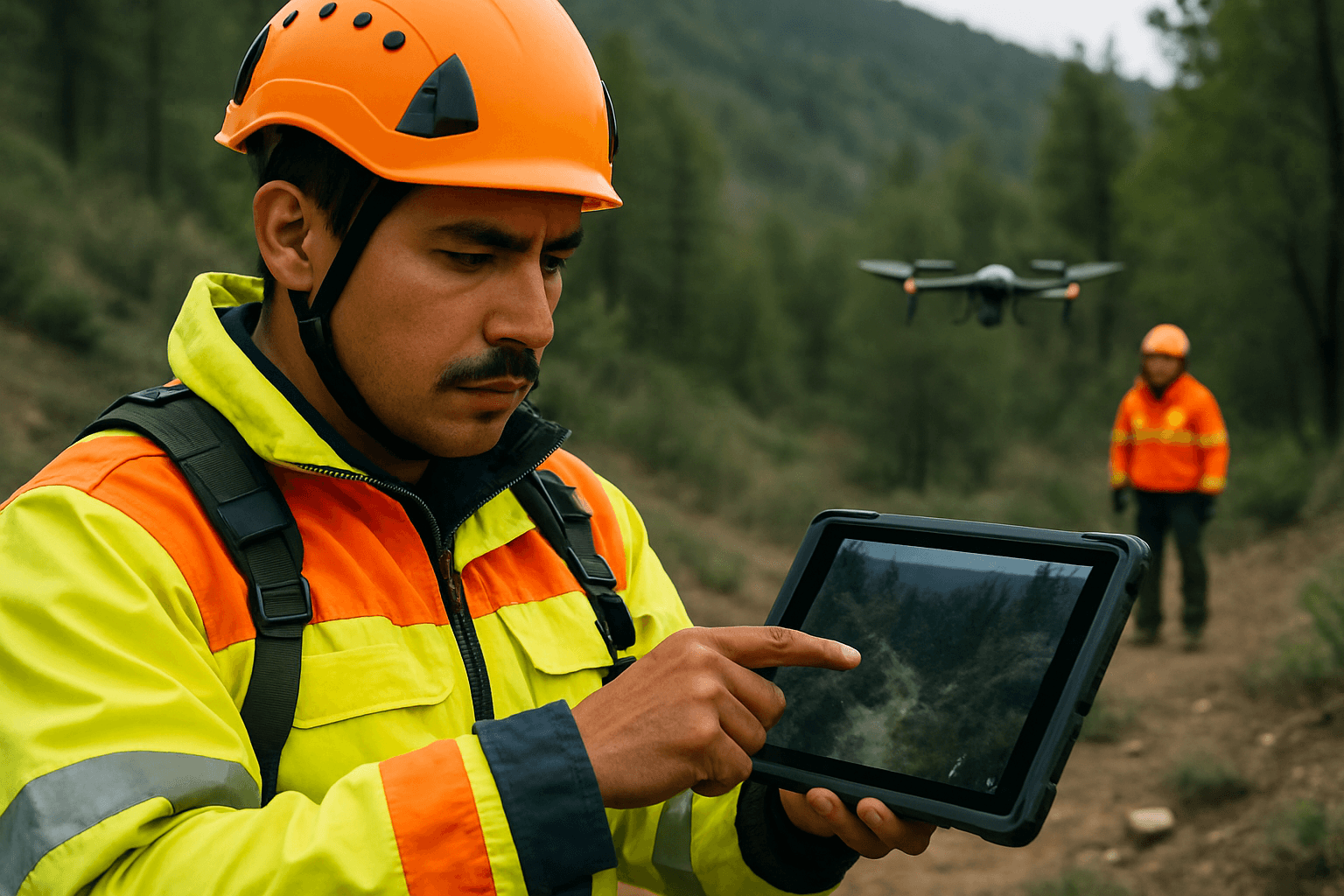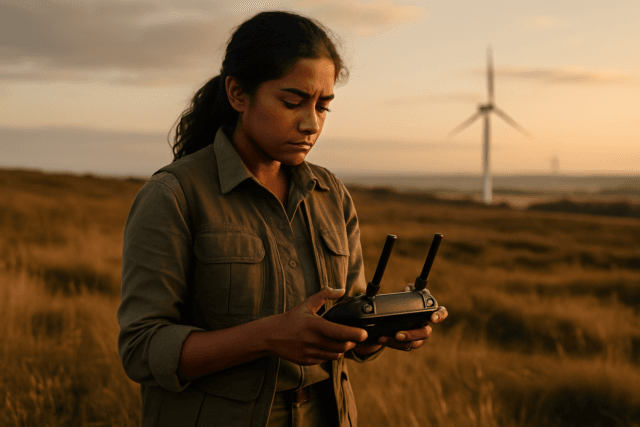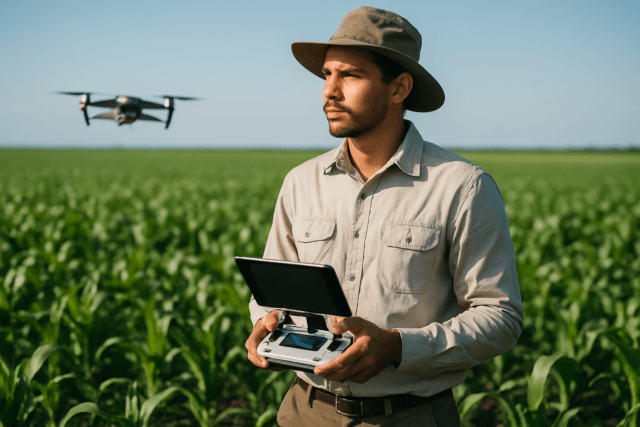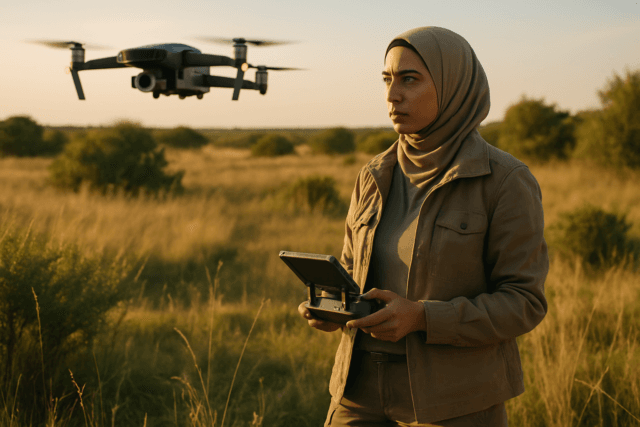The integration of Unmanned Aerial Systems (UAS), or drones, has fundamentally transformed search and rescue (SAR) operations, offering capabilities far beyond traditional methods. Drones can swiftly survey vast, often inaccessible terrains, providing real-time visual and thermal data crucial for locating missing persons, assessing hazards, and coordinating rescue efforts. However, the full potential of these aerial assets is only realized when supported by a well-trained ground team, including non-pilot SAR members who play critical, often underestimated, roles.
This article outlines how to effectively train non-pilot SAR team members to assist with drone operations, ensuring seamless integration, enhanced efficiency, and ultimately, more successful rescue missions.
The Evolving Role of Drones in Search and Rescue
Drones have become indispensable tools in SAR, offering a unique “bird’s-eye view” and capabilities that traditional methods cannot match. They enhance visibility in challenging terrains, provide real-time fire mapping, and can rapidly deploy to time-sensitive operations. From locating individuals using thermal imaging in low visibility to assessing structural damage in disaster zones, drones significantly improve situational awareness for rescue teams. This technological leap not only accelerates the rescue process but also cuts operational costs and time for public safety agencies.
Why Non-Pilot Support is Critical for SAR Drone Operations
While the drone pilot (Remote Pilot in Command, or RPIC) is central, a drone mission is a team effort. Non-pilot SAR members are vital for several reasons, ensuring safety, efficiency, and maximizing the drone’s effectiveness.
Enhancing Efficiency and Safety
The RPIC has many responsibilities, including maintaining control of the drone, monitoring telemetry, and interpreting payload data. This cognitive load can be immense, especially in dynamic SAR environments. Non-pilot team members act as additional eyes and hands, reducing the burden on the pilot and enhancing overall situational awareness. Their support ensures that all aspects of the mission are covered, from pre-flight checks to post-mission data handling. Drones can also reduce risks to human rescuers by assessing dangerous areas before ground teams are deployed.
Maximizing Pilot Focus
By delegating tasks such as visual observation, ground logistics, and communication relay, non-pilot personnel allow the RPIC to focus primarily on flying the drone and managing its sensors. This concentrated effort is critical for precise navigation, accurate data collection, and swift decision-making in high-stress situations.
Key Roles for Non-Pilot SAR Team Members
Several specialized roles can be filled by non-pilot SAR members to significantly augment drone operations.
Visual Observer (VO)
The Visual Observer (VO) is a critical team member, often described as a “second set of eyes” for the RPIC. The VO’s primary responsibility is to maintain a continuous visual line of sight with the drone and actively scan the surrounding airspace and ground for potential hazards. This includes looking for other aircraft, birds, obstacles like power lines or trees, and changes in weather or ground conditions. The VO communicates critical information to the RPIC, ensuring the drone operates safely and within regulations.
There are often two types of VOs:
- Scanner VO: Constantly scans the skies and ground for any potential safety hazards, including people approaching the operational area.
- Drone VO: Maintains constant visual contact with the drone itself, assisting the pilot in knowing its exact location, especially if it drifts from the pilot’s direct view.
Ground Support/Logistics
Ground support personnel handle the practical aspects of drone deployment, ensuring the pilot can focus on the mission. Their responsibilities may include:
- Site Preparation: Securing take-off and landing zones, managing crowds, and setting up necessary equipment.
- Battery Management: Swapping batteries, monitoring charge levels, and ensuring fresh batteries are ready.
- Equipment Transport: Moving drones, sensors, spare parts, and other ancillary gear to and from the mission site.
- Perimeter Security: Maintaining a safe operational perimeter and interacting with the public if necessary.
- Payload Management: Assisting with the attachment and detachment of specialized payloads (e.g., thermal cameras, spotlights, delivery mechanisms).
Data Management and Analysis Assistant
Drones collect vast amounts of data, including high-resolution photos, videos, and thermal imagery, often with geotagging information. Non-pilot team members can assist in managing and initially processing this data, reducing the post-mission workload for the pilot and ensuring valuable insights are not lost.
Key tasks include:
- Secure Data Transfer and Backup: Immediately transferring data from drone storage media (e.g., SD cards) to a robust, backed-up system in the field.
- Initial Data Review: Performing a preliminary review of imagery to identify obvious points of interest, saving time for in-depth analysis later.
- Logging and Documentation: Maintaining detailed records of flight hours, mission details, maintenance, and any encountered issues. This helps in post-mission analysis, incident reconstruction, and meeting legal requirements.
Communications Relay
Clear and concise communication is paramount in SAR operations. Non-pilot team members can serve as a vital link between the drone team, incident command, and other ground units. This role involves:
- Relaying Information: Transmitting real-time updates from the drone pilot to incident command and vice-versa.
- Standardized Terminology: Ensuring consistent use of agreed-upon communication protocols and terminology to avoid misunderstandings.
- Situational Awareness: Helping to maintain a common operating picture by integrating drone intelligence with other SAR efforts.
Developing a Comprehensive Training Program
Effective training for non-pilot SAR members should be structured, practical, and regularly updated.
Core Knowledge and Principles
- Introduction to UAS for SAR: Understanding the types of drones used, their capabilities, and common SAR scenarios where they are deployed.
- Drone Safety and Regulations: Familiarity with FAA (or local equivalent) regulations, airspace classifications, operational waivers, and general safety procedures. This includes understanding basic UAS safety and emergency procedures.
- Team Communication Protocols: Establishing clear and standardized communication procedures between the drone pilot, VO, ground support, and incident command.
- Situational Awareness: Training to continuously understand the drone’s status, the operational environment (weather, terrain, obstacles), and the mission objective.
Practical Skills and Drills
- Visual Observer Drills: Hands-on practice in scanning techniques, hazard identification, and precise communication with a pilot. This involves understanding how to effectively communicate information corresponding to the pilot’s position, not the VO’s.
- Pre-Flight and Post-Flight Procedures: Assisting with comprehensive equipment checks, environmental assessments, and secure data handling.
- Mission Planning Support: Learning to assist in creating detailed mission plans, including search patterns, optimal flight paths, and contingency strategies.
- Emergency Procedures: Drills for scenarios such as lost link, flyaways, emergency landings, and battery failures.
- Scenario-Based Learning: Practicing drone deployment in realistic, multi-disciplinary SAR situations, including various terrains and weather conditions.
Equipment Familiarization
Non-pilot team members should be familiar with the drone hardware, its components, and payloads, even if they aren’t piloting.
- Drone Components: Understanding propellers, batteries, landing gear, and general drone health.
- Payload Operation: Basic understanding of how cameras, thermal sensors, and other specialized equipment function and what data they collect.
- Ground Control Station (GCS) Basics: Familiarity with the GCS interface for basic monitoring or data review.
Legal, Regulatory, and Ethical Considerations
Training must also cover the critical legal and ethical aspects of drone operations in SAR.
- Airspace Regulations: Understanding no-fly zones, temporary flight restrictions, and coordination with manned aircraft.
- Privacy Laws: Awareness of privacy concerns when operating drones, especially regarding data collection and public perception.
- Data Protection: Protocols for secure storage, retention, and handling of sensitive information gathered during missions.
- Humanitarian Principles: Ethical considerations around respecting individuals in distress and the responsible use of technology in sensitive situations.
Integration and Interoperability with Existing SAR Protocols
Drone operations should not be standalone but seamlessly integrated into existing Incident Command System (ICS) structures and SAR protocols. Training should emphasize:
- Coordination with Incident Command: Understanding the chain of command and how drone intelligence fits into overall incident management.
- Interoperability: Working effectively with other SAR assets (e.g., K9 units, ground teams, manned aviation).
- Standard Operating Procedures (SOPs): Development and adherence to clear SOPs for all drone-assisted SAR activities.
Continuous Training and Advanced Specializations
The field of drone technology is rapidly evolving, necessitating ongoing training and opportunities for specialization.
- Regular Refreshers: Periodic training sessions to hone skills and adapt to new technologies and regulations.
- Advanced Modules: Specialized training in areas like night operations, thermal imaging analysis, or advanced data processing.
- New Technologies: Keeping up-to-date with advancements such as AI integration for enhanced data analysis and autonomous capabilities.
Conclusion: Building a Resilient Drone-Enabled SAR Force
By investing in comprehensive training for non-pilot SAR team members, organizations can build a more resilient, efficient, and safer drone-enabled search and rescue force. These trained individuals become invaluable assets, maximizing the effectiveness of drone technology and allowing pilots to operate with greater focus and support. Ultimately, this collaborative approach enhances situational awareness, accelerates response times, and significantly increases the chances of saving lives when every second counts.





